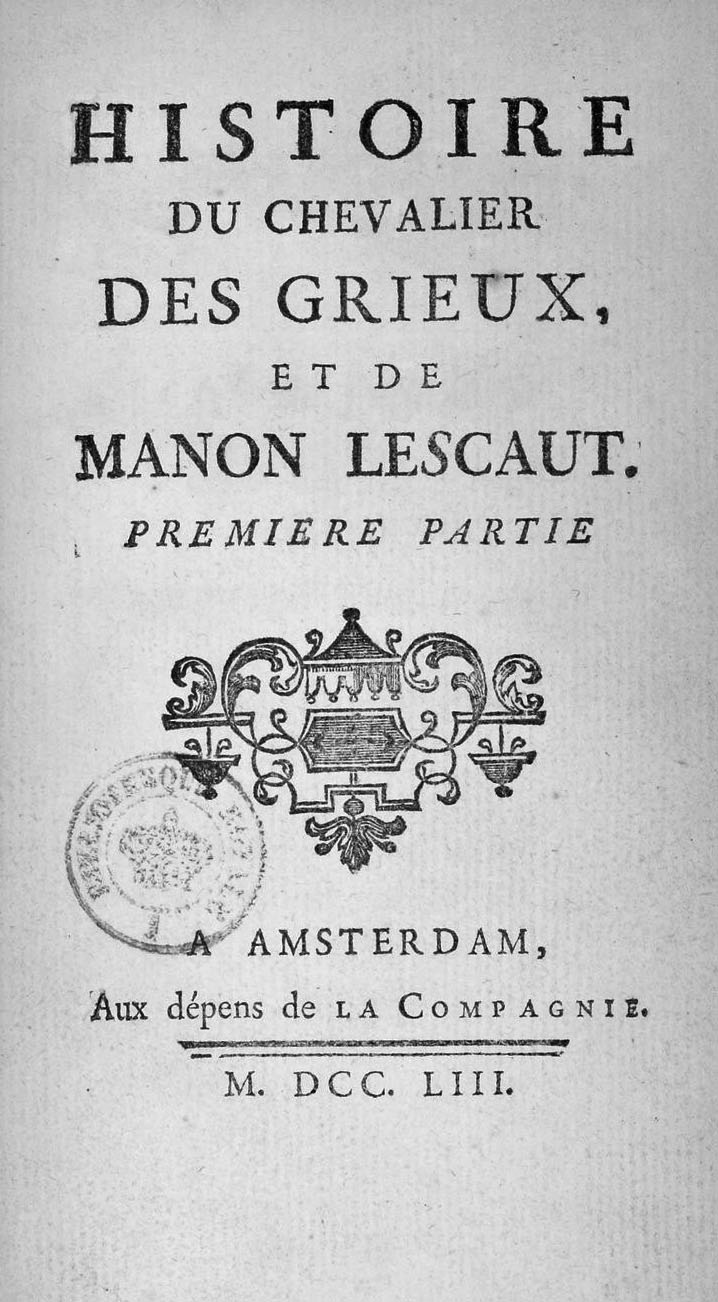Manon Lescaut
 ''The Story of the Chevalier des Grieux and Manon Lescaut'' ( ) is a novel by Antoine François Prévost. Most commonly referred to as simply ''Manon Lescaut'', the novel is a tragic love story about a nobleman (known only as the Chevalier des Grieux) and a common woman (Manon Lescaut). Defying conventional morality, they run away together and commit an escalating series of crimes to fund a lifestyle of pleasure. The narrative is presented as a long speech by des Grieux nine months after Manon's death, and is often interrupted by his retrospective emotions. The novel is regarded as a classic, and is the most reprinted novel in French literature, with over 250 editions.
''The Story of the Chevalier des Grieux and Manon Lescaut'' ( ) is a novel by Antoine François Prévost. Most commonly referred to as simply ''Manon Lescaut'', the novel is a tragic love story about a nobleman (known only as the Chevalier des Grieux) and a common woman (Manon Lescaut). Defying conventional morality, they run away together and commit an escalating series of crimes to fund a lifestyle of pleasure. The narrative is presented as a long speech by des Grieux nine months after Manon's death, and is often interrupted by his retrospective emotions. The novel is regarded as a classic, and is the most reprinted novel in French literature, with over 250 editions.The story was first published in 1731 in Amsterdam as the seventh and final volume of Prévost's serial novel ''Memoirs and Adventures of a Man of Quality'' (). In 1733, all copies for sale in Paris were seized due to the volume's morally questionable content. This effective ban contributed to an increase in popularity, and several unauthorized reprints of ''Manon Lescaut'' without the rest of the ''Memoirs and Adventures''. In 1753, Prévost published a revised version of the standalone ''Manon Lescaut'', which is now the most commonly reprinted version.
On the novel's first publication, the characters' choices were seen as shockingly immoral: their decision to live together without marriage is the start of a moral decline that also leads to gambling, fraud, theft, and murder. The novel was unusual for depicting Paris's "low life" and for discussing the lovers' money problems in numerical detail: both choices contribute to its realism and its aura of scandal.
The story is remembered for its tragic lovers, with des Grieux and Manon often compared to Romeo and Juliet or Tristan and Iseult. Over the centuries, audiences have judged Manon's morals and personality differently. Eighteenth-century audiences saw her as an unworthy figure who nonetheless inspired affection and pity due to the sincerity of her love for des Grieux. Nineteenth-century responses saw her as a nearly mythological temptress, either a ''femme fatale'' who corrupts des Grieux or a hooker with a heart of gold who is redeemed through her death. More recent scholarly analyses tend to see Manon as a victim of broader social forces, who is misunderstood and misrepresented by des Grieux's narration of her experience.
''Manon Lescaut'' has had dozens of adaptations into plays, ballets, operas, and films. The most renowned stage adaptations are three operas: Daniel Auber's ''Manon Lescaut'' (1856), Jules Massenet's ''Manon'' (1884), and Giacomo Puccini's ''Manon Lescaut'' (1893). ''Manon Lescaut'' also heavily inspired Giuseppe Verdi's opera ''La traviata'' (1853), through its influence on the play and novel ''La Dame aux Camélias'' by Alexandre Dumas ''fils''. Notable film adaptations include the Hollywood silent film ''When a Man Loves'' (1927) and ''Manon 70'' (1968), starring Catherine Deneuve as Manon. Provided by Wikipedia




